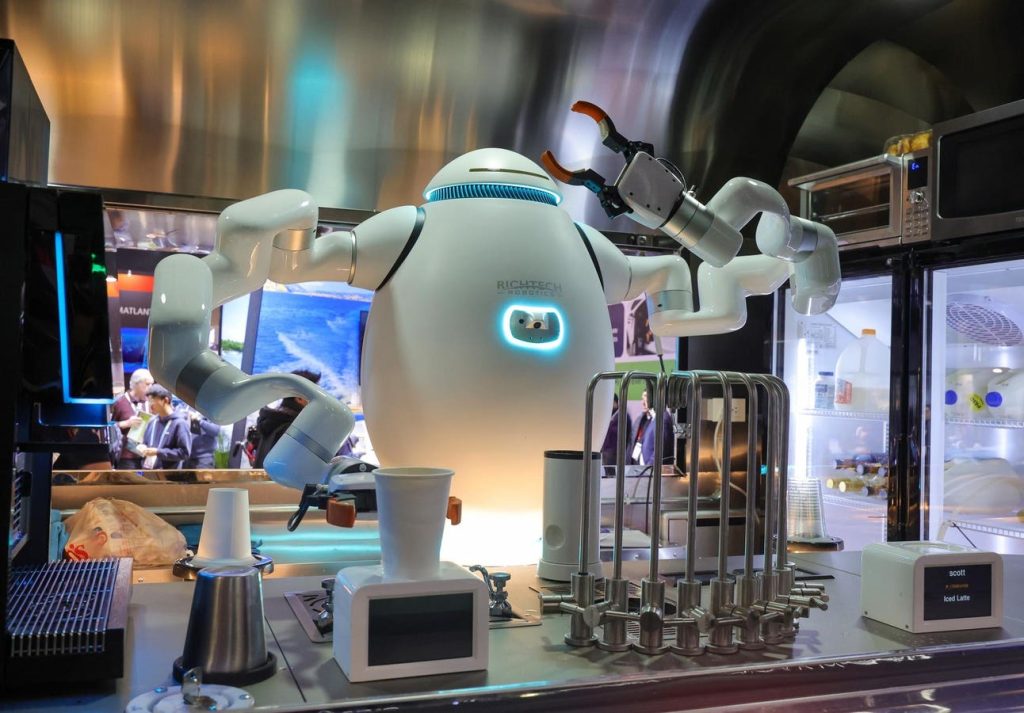A recent forecast by restaurant consultancy Aaron Allen & Associates suggests that up to 82% of restaurant roles could potentially be replaced by robots in the near future, with a significant portion, estimated at 31%, being dedicated to food preparation. This shift towards automation could lead to substantial cost savings for fast-food establishments in the U.S., surpassing $12 billion annually as projected by the group.
Restaurants are turning towards robot chefs for various reasons, including addressing the ongoing struggle to recruit employees in the industry. With at least 60% of dining establishments facing difficulties in finding workers, robot chefs offer a solution by providing consistency and precision in food preparation. Additionally, robots do not suffer from fatigue or human error, leading to increased efficiency and reduced labor costs for restaurant owners. The ability of robot chefs to work tirelessly ensures that meals are produced quickly and accurately, allowing restaurants to serve more customers during peak hours and ultimately boosting revenue.
Aside from their practical benefits, robot chefs also offer a unique appeal from a public relations perspective. The novelty and futuristic nature of these automated chefs can attract curious customers, generating buzz and publicity for restaurants. As technology continues to advance and evolve, the integration of robot chefs in culinary operations represents a significant step towards innovation and efficiency in the global restaurant industry.
Several global restaurants have already embraced the use of robot chefs. Examples include CaliExpress by Flippy in California, BOTS&POTS Sci-Food bistro in Croatia, E Vino Spaghetti in Japan, Sweetgreen in the United States, and RoboChef, a cloud-based robotic chef quick service restaurant with global franchise opportunities. These establishments showcase how robot chefs are transforming traditional dining experiences by offering precise ingredient selection, cooking techniques, and personalized culinary creations. By embracing automation, restaurants can enhance the quality and consistency of dishes while also opening doors to new culinary possibilities.
The use of robot chefs has not only revolutionized the way meals are prepared in restaurants but has also improved efficiency and reduced wait times for customers. In the fast-casual chain, Sweetgreen, robotic salad-making chefs within the Infinite Kitchen have significantly enhanced salad assembly processes. Additionally, global franchise opportunities like RoboChef in Dubai and Singapore are demonstrating the viability and success of AI-enabled, cloud-based robotic chefs in the food service industry.
As the culinary world continues to evolve, the integration of robot chefs in global restaurants represents a significant stride towards innovation and efficiency. From precise ingredient selection to cooking techniques, robotic chefs are reshaping traditional dining experiences and enhancing the overall quality of dishes. By embracing automation, restaurants are not only improving operational efficiency but are also creating new opportunities for culinary exploration and creativity.


